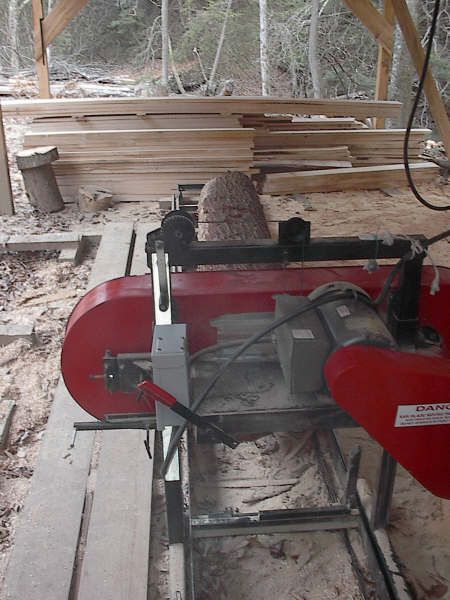Question
I'm looking for recommendations for putting a clutch on a mill with a 10 hp electric motor. Anybody gone through the process?
Forum Responses
(Sawing and Drying Forum)
From contributor K:
I've got an electric Wood-Mizer and they use a mount under the electric motor that simply goes slack when you pull on a lever, releasing tension on the drive belt, and tightening it when you pull on it, so the motor is always idling when on. Very simple - same system they use for their gas motors. They do have a special spider that has three fingers around the electric motor drive pulley that keeps the belt off the pulley when the tension is off. You may want to look at someone's. Otherwise they use an electric clutch system similar to ones used on lawnmower decks. You could possibly get one from a lawnmower junkyard.
First, everyone talks about the reduction in blade life due to metal fatigue and without a clutch, the blade is obviously making a lot of unnecessary revolutions.
Second (maybe my setup is unusual in this), each time I shut off the mill and the (10 hp single ph) motor slows down, I get a severe shudder in the mill. I have talked to a Baldor tech who says this is due to rpm change when the centrifugal switch reengages the starter capacitor circuit and is normal and unavoidable. With the drive belts disconnected this is minimal, but due to all the mass and inertia of the wheels, it becomes amplified. Despite the fact that the tech says it's normal, I have to believe it is hard on the mill bearings, blades, etc.
The third and less critical issue it the additional electricity used in starting the mill, though I know this does not add up to a major amount of money. Any thoughts?
The mill was made in 2005 and to stop the motor once it was started meant turning off the power, which killed the set works as well. So I wired up a switch that broke power to the motor so I could cut the power to stop the motor. Blade life was pretty sorry till I did that.
Thanks contributor A - I was just curious. Yes, killing the blade rotation will increase blade life.

All the years I had my mill I didn't break many blades and I didn't have any problem with the motor. The only time I'd turn off the motor was when I was flipping the log for another cut, which I'd say is 3 or 4 times a log. I could see the lights dim in my house though, when I'd turn on the motor. I didn't cut that much wood in a year. I'd guess about 10,000 board feet a year. I'd average about 500 board feet in 4 hours on average by myself.